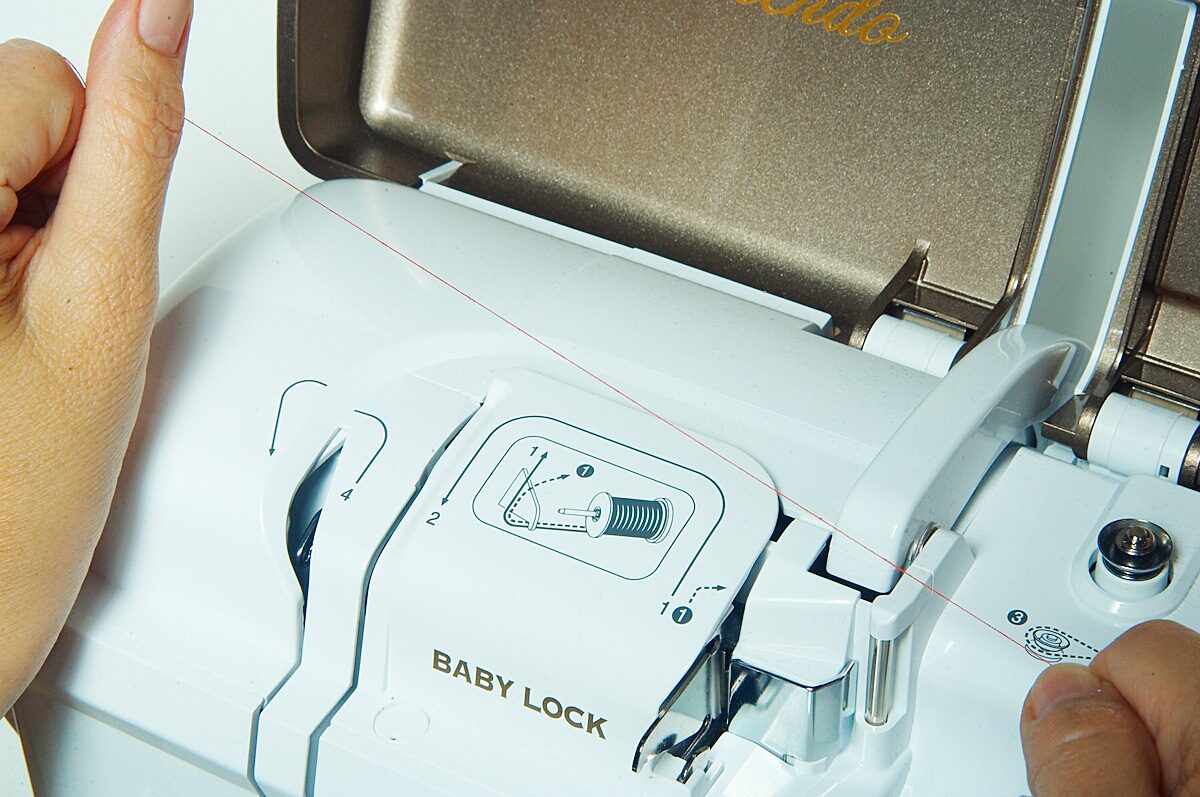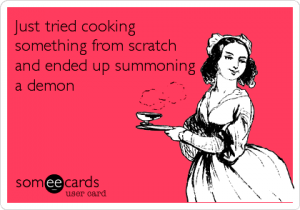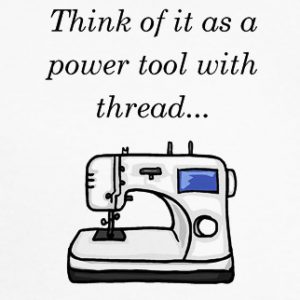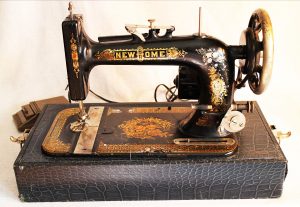One of the best pieces of advice my mom ever gave me in regard to baking was to buy a box of white cake mix and blend in whatever flavor of cake I wanted to make. It’s proven effective for banana cake and coconut cake, and I’m interested in trying an orange cake later on down the road. The problem with the strategy though is that I never really learned the more elaborate way to make those cakes, if you consider it a problem. I mean, the cakes taste fine, so what does it matter if Pillsbury was involved?
I find myself having a similar conundrum now that it’s potentially approaching the right time for me to buy a new sewing machine. Which, by the way, isn’t the easiest step for me. I’m a creature of habit and comfort, guys — to the point where making myself watch a new movie might be a challenge. So buying a new sewing machine? Not necessarily an experience I excitedly dive into!
It also doesn’t help matters that I can be a cheap frugal person, so my #1 criterion in the past might have been, “Which one is cheapest???” Well, now that I have different goals in mind for the sewing machine other than just a hobby, I’m thinking I might want to expand my ideas a bit to make a more complex decision. That decision though has led me into the Pillsbury version of a sewing problem — should I learn more from scratch, or rely on modern conveniences?+
Let me explain that reasoning!
The truth of the matter is that I’m nowhere near a sewing expert, and there are details about the process and machinery that still leave me metaphorically scratching my head. I’ve come some distance in the things that I did learn and have practiced with, but there’s still so much left to find out and excel at. One of those things — something that I haven’t quite gotten the hang of yet — is tension, which can be SUCH A BIG DEAL with sewing by machine. As one source said, “[n]o matter what stitch you are sewing, it will look terrible if the tension if off” (Lawson, 2011, “Tension” section).
That’s a hefty amount of pressure to put on any one specific aspect of a sewing machine. Basically, I could do everything else perfectly and still have a horrible final product because I missed the mark on the tension detail. I kid you not when I say that my experience and understanding of tension might be laughable to a number of more advanced sewing enthusiasts, so logically, finding a machine that can make that detail easier would be a good idea for me, like one that automatically adjusts the tension.
Or would it?
That question moves into the Pillsbury section of territory for the sewing concept. Should I get a machine that will automatically adjust it for me, like Pillsbury assists me with cakes? Is that the best strategy in the long-run?
The lazy part of my brain screams, “YES!” and can back up that idea with coconut and banana memories of simple, scrumptious treats. But the other part of my mind — the one that realizes technology has definitely eased up sewing (and baking) to the point that my grandmother would probably be disappointed — says, “Uh, no.”
Honestly, when I think about the history of sewing and how few tools used to be available for the process, it’s potentially hard not to be a tad bit ashamed if I lean too much on technology to do the work for me. Even after sewing machines became a thing, there were still real differences to what we now have.
The struggle is real
It’s just like the notion that my Pillsbury-based cakes lack a certain impressive quality in comparison to a tasty baked-from-scratch cake. Sure, they’re good, but they aren’t that level of remarkable.
It’s a struggle between wanting an easy route and wanting a more challenging route, and at this point, I’m not 100% sure which way the decision will go. I could buy a machine that does the tension for me, and I could end up with wonderful projects without ever fully getting a handle on how to do tension for different crafts. Or I could make things harder on me for the moment, then come away from the experience as a more advanced quilter/sewing enthusiast.
Should I Pillsbury-cheat, or go the distance? Decisions, decisions, guys!




